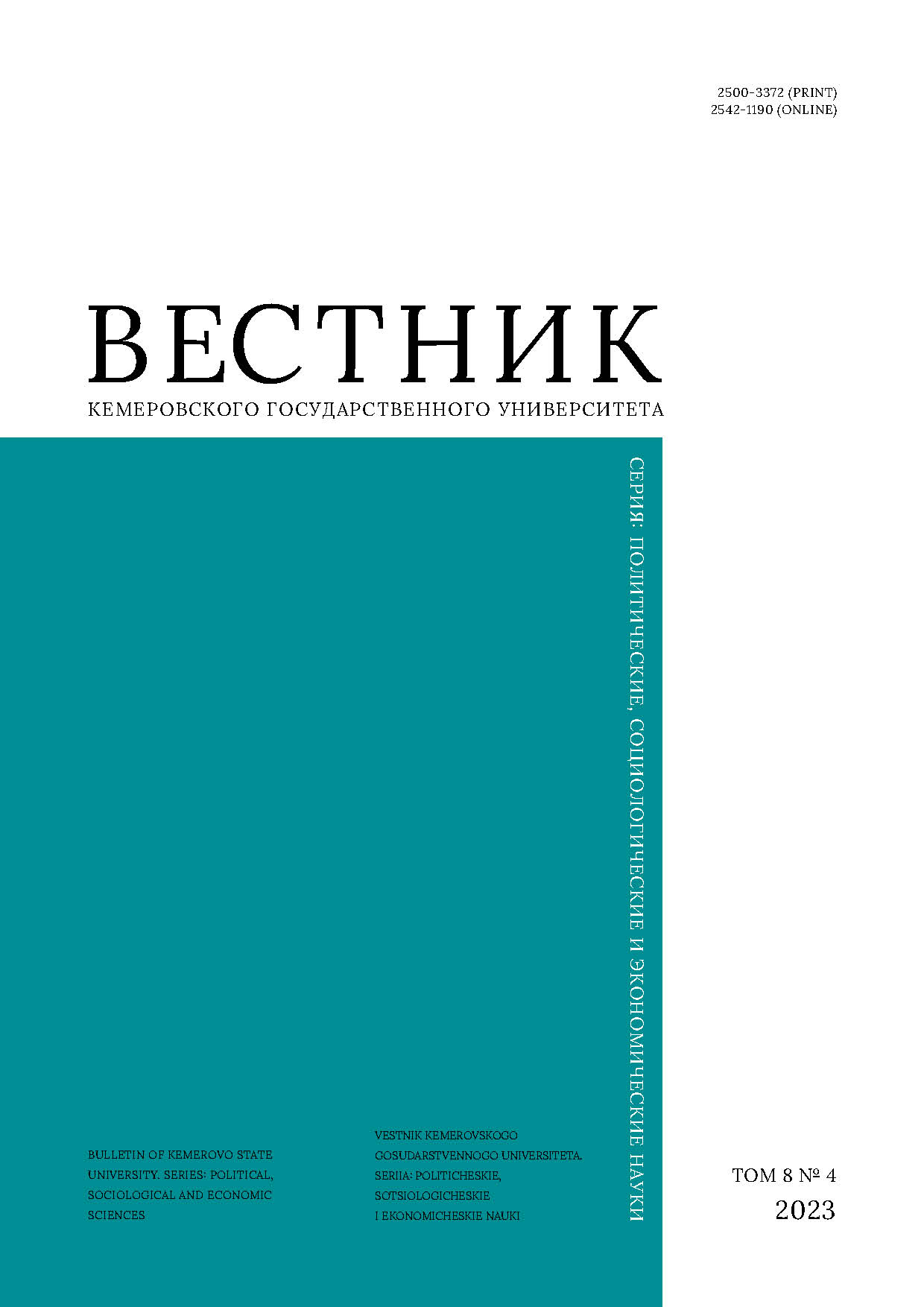Москва, Россия
Количество и мобильность иностранных студентов являются признаком качества и престижа вузов и учебных заведений. Международная студенческая мобильность влияет на различные аспекты глобального общества, включая социально-экономическую, политическую и культурную среду, науку и технологии. Чтобы позиционировать свою конкурентоспособность в мировой образовательной среде и привлекать иностранных студентов, Россия предлагает широкий спектр программ, где английский язык является языком обучения. Статья представляет собой описательное исследование, использующее системный подход для анализа денежных доходов от иностранных студентов в России. Результаты показывают, что 64,5 % иностранных студентов (182893) обучались в российских вузах в 2017 / 2018 учебном году очно на хозрасчете. Среди 6 ведущих стран, принимающих иностранных студентов, Россия тратит на образование самый низкий процент от ВВП (3,7 %) и имеет самый низкий экономический вклад иностранных студентов в ВВП (0,1 %), общий экономический вклад иностранных студентов (2,3 млрд долларов). За период обучения иностранные студенты потратили в России около 637,5 млн долларов на обучение и 1632,7 млн долларов на бытовые расходы. Совокупный доход от оказания российских образовательных услуг иностранным гражданам в Российской Федерации составляет 2270,2 млн долларов.
высшее образование, миграция, студенты, иностранные студенты, денежное воздействие, экономическое воздействие, Россия
1. Green M. F. Measuring and assessing internationalization. NAFSA, Association of International Educators, 2012. URL: https://goglobal.fiu.edu/_assets/docs/m-green-2012-measuring_and_assessing_internationalization.pdf (accessed 19 May 2023).
2. Hazelkorn E. Rankings and the reshaping of higher education. The battle for world-class excellence. L.: Palgrave Macmillan, 2015, 259. https://doi.org/10.1057/9780230306394
3. De Moor B., Henderkx P. International curricula and student mobility. LERU: Advice Paper, 2013, (12). URL: https://www.leru.org/files/International-Curricula-and-Student-Mobility-Full-paper.pdf (accessed 19 May 2023).
4. Docquier F., Lohest O., Marfouk A. Brain drain in developing countries. The World Bank Economic Review, 2007, 21(2): 193-218. https://doi.org/10.1093/wber/lhm008
5. Ryazantsev S. V., Rostovskaya T. K., Skorobogatova V. I., Bezverbny V. A. International academic mobility in Russia: trends, types, state stimulation. Ekonomika regiona, 2019, 15(2): 420-435. (In Russ.) http://dx.doi.org/10.17059/2019-2-9
6. Bleaney M. F., Binks M. R., Greenaway D., Reed G. V., Whynes D. K. What does a University add to its local economy? Applied Economics, 1992, 24(3): 305-311. https://doi.org/10.1080/00036849200000143
7. Schultz T. W. Capital formation and education. Journal of Political Economy, 1960, 68(6): 571-583. https://doi.org/10.1086/258393
8. Blanco-Portela N., R-Pertierra L., Benayas J., Lozano R. Sustainability leaders’ perceptions on the drivers for and the barriers to the integration of sustainability in Latin American higher education institutions. Sustainability, 2018, 10(8). https://doi.org/10.3390/su10082954
9. Rossi F., Goglio V. Satellite university campuses and economic development in peripheral regions. Studies in Higher Education, 2020, 45(1): 34-54. https://doi.org/10.1080/03075079.2018.1506917
10. Ghani N. A., Teo P.-C., Ho T. C. F., Choo L. S., Kelana B. W. Y., Adam S., Ramliy M. K. Bibliometric analysis of global research trends on higher education internationalization using Scopus database: towards sustainability of higher education institutions. Sustainability, 2022, 14(14). https://doi.org/10.3390/su14148810
11. Altbach P. G., De Wit H. Internationalization and global tension: lessons from history. Journal of Studies in International Education, 2015, 19(1): 4-10. https://doi.org/10.1177/1028315314564734
12. Knight J. Internationalization remodeled: definitions, rationales and approaches. Journal of Studies in International Education, 2004, 8(1): 5-31. https://doi.org/10.1177/1028315303260832
13. Knight J. Education hubs: a fad, a brand, an innovation? Journal of Studies in International Education, 2011, 15(3): 221-240. https://doi.org/10.1177/1028315311398046
14. Yuan R., Li S., Yu B. Neither "local" nor "global": Chinese university students’ identity paradoxes in the internationalization of higher education. Higher Education, 2019, 77(6): 963-978. https://doi.org/10.1007/s10734-018-0313-7
15. Altbach P. G. The international imperative in higher education. Rotterdam: Sense Publishers, 2013, 198. https://doi.org/10.1007/978-94-6209-338-6
16. Mechtenberg L., Strausz R. The Bologna process: how student mobility affects multi-cultural skills and educational quality. International Tax and Public Finance, 2008, 15(2): 109-130. https://doi.org/10.1007/s10797-007-9040-1
17. Arefiev A. L. Russian language and Russian speaking education in the Republic of Lithuania. Alma Mater (Vestnik Vysshey Shkoly), 2020, (8): 70-84. (In Russ.) https://doi.org/10.20339/AM.08-20.070
18. Phang S. L. Factors influencing international students’ study destination decision abroad. Gothenburg, 2013. URL: https://gupea.ub.gu.se/bitstream/2077/32136/1/gupea_2077_32136_1.pdf (accessed 19 May 2023).
19. Soo K. T., Elliott C. Does price matter? Overseas students in UK higher education. Economics of Education Review, 2008, 29(4): 553-565. https://doi.org/10.1016/j.econedurev.2009.10.016
20. Docquier F., Turati R., Valette J., Vasilakis C. Birthplace diversity and economic growth: evidence from the US states in the Post-World War II period. Journal of Economic Geography, 2020, 20(2): 321-354. https://doi.org/10.1093/jeg/lbz016
21. Levent F. The economic impacts of international student mobility in the globalization process. International Journal of Human Sciences, 2016, 13(3): 3853-3870. https://doi.org/10.14687/jhs.v13i3.3877
22. Chang D.-F., Chang A. Detecting the impacts of newborn babies and its effect on elementary school enrollment. ICIC Express Letters, Part B: Applications, 2021, 12(6): 499-506. https://doi.org/10.24507/icicelb.12.06.499
23. Chang D.-F. Implementing internationalization policy in higher education explained by regulatory control in neoliberal times. Asia Pacific Education Review, 2015, 16(4): 603-612. http://dx.doi.org/10.1007/s12564-015-9407-4
24. Siddiq F., Baroni J., Lye J, Nethercote W. C. E. The economic impact of post-secondary international students in Atlantic Canada. Dalhousie University, School of Public Administration, 2010, 118.
25. Nikolaev V. K. Exporting Russian higher education in the conditions of a new reality. Vysshee obrazovanie v Rossii, 2022, 31(2): 149-166. (In Russ.) https://doi.org/10.31992/0869-3617-2022-31-2-149-166
26. Endovitsky D. А., Korotkikh V. V., Voronova M. V. Competitiveness of Russian universities in the global system of higher education: quantitative analysis. Vysshee obrazovanie v Rossii, 2020, 29(2): 9-26. (In Russ.) https://doi.org/10.31992/0869-3617-2020-29-2-9-26
27. Ryazantsev S. V., Pismennaya E. E. Effects of the foreign students’ migration in Russia. Narodonaselenie, 2009, (2): 69-79. (In Russ.) https://elibrary.ru/ocbdft
28. Ainalieva A. R. The place of foreign students in the Russian higher education system. The world of science, culture and education, 2016, (6): 9-11. (In Russ.) https://elibrary.ru/xhcyzn



















